
Being a successful home grower involves understanding how to make the most of each and every crop that you grow.
Experienced organic gardeners soon learn that not everything goes according to plan. But they also learn that some edible plants offer ‘secret’ secondary yields as well as the main harvested part.
Garlic scapes are one excellent example.
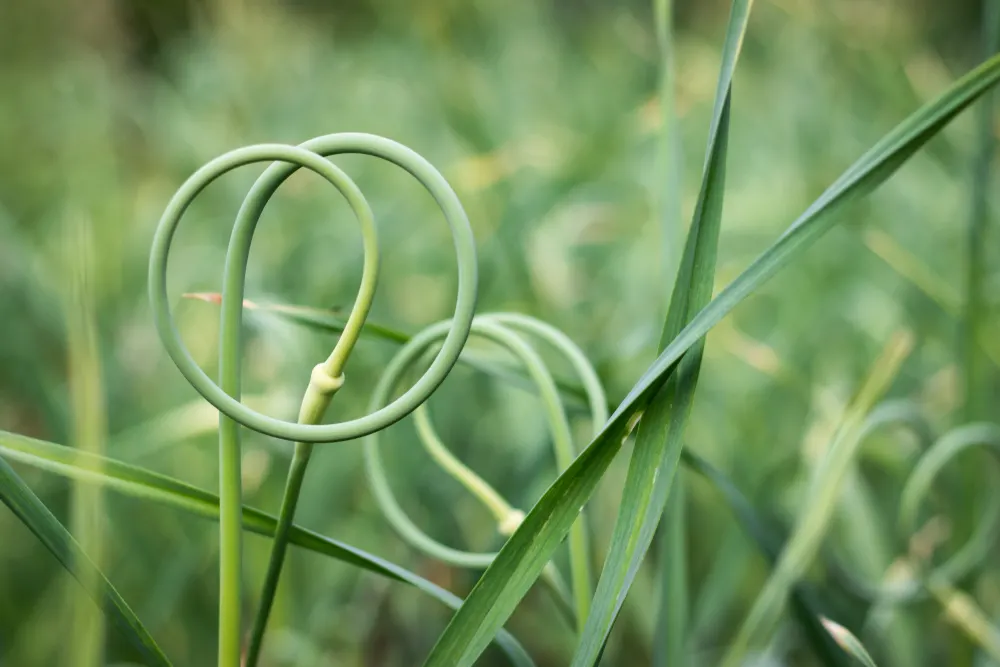
Many people are unaware that pea shoots and leaves taste great – almost as good as the pods and peas themselves.
As well as eating the roots of beets and turnips, the leaves above ground are also a good edible crop.
Leave a radish or two in the ground and as they flower and begin to go to seed, you can harvest a delicious additional and abundant yield of green radish seed pods.
Likewise, a garlic bulb is not the only part of the plant that you can eat. Garlic scapes can also be delicious. What is more, by removing them, you may end up with bigger bulbs as more energy can be directed towards bulb formation.
What Are Garlic Scapes?
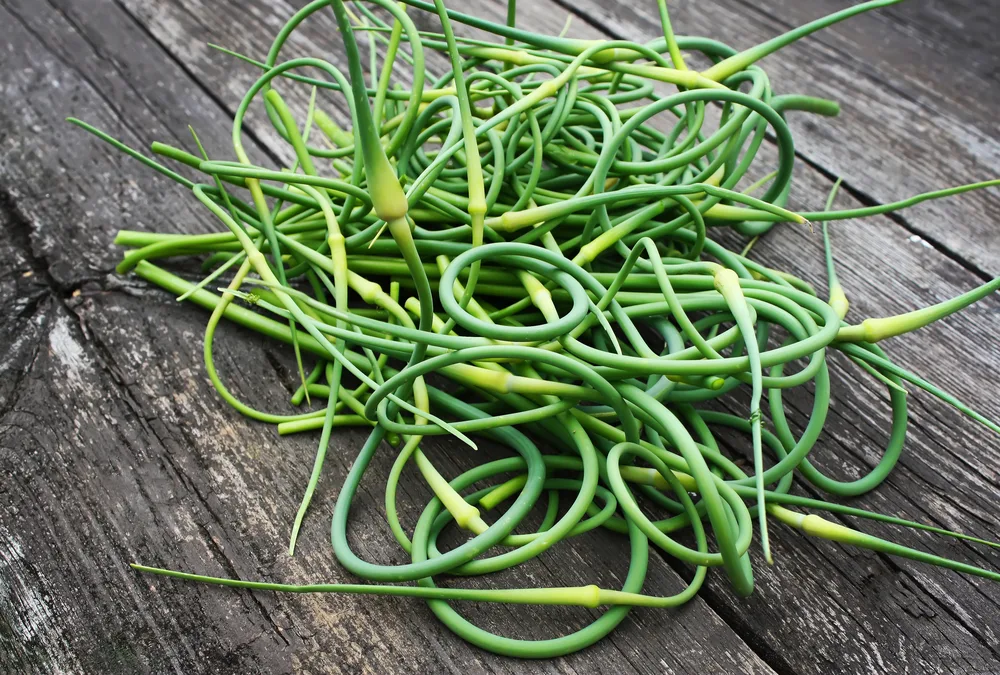
Garlic scapes are the flowering stalks of hardneck garlic varieties (Allium sativum var. ophioscorodon).
Garlic comes in both softneck and hardneck varieties.
Hardneck varieties are usually a better option for cool climate gardeners, as they are generally hardier. Hardneck are also the varieties to grow if you would like an additional yield of garlic scapes. Scapes will not form on softneck varieties.
It is worth noting that the perennial allium elephant garlic also produces scapes. These too can be harvested and eaten if you wish. Though you may also wish to let these plants come into full flower for the benefits they can bring to your garden.
How To Harvest Garlic Scapes
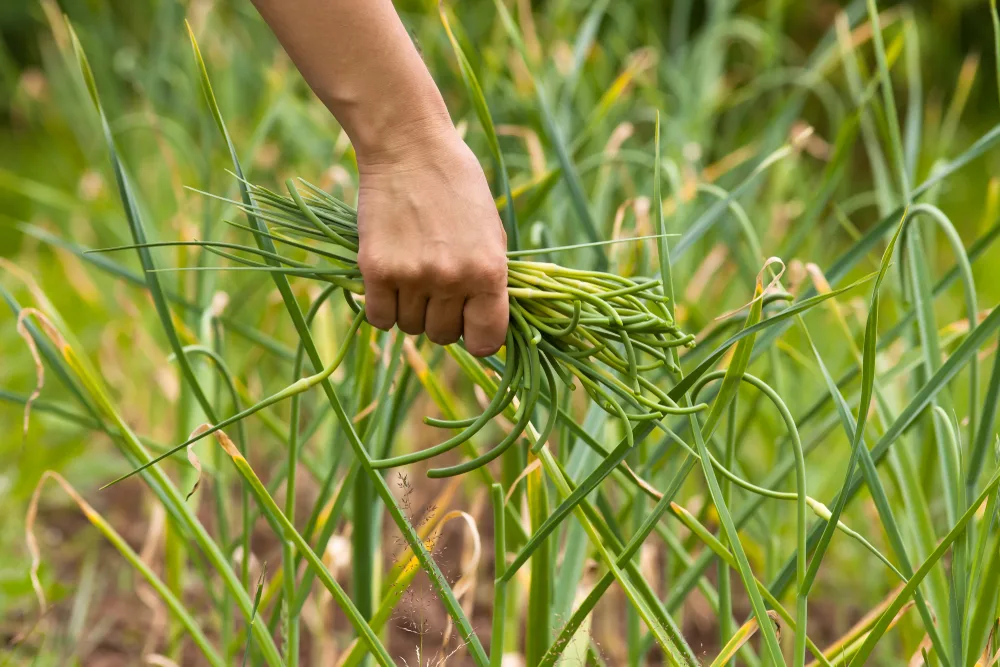
Garlic scapes are best harvested when they are fairly young, before they have become tough and begun to straighten and dry out. The longer they are, the more fibrous they become, and cooking will generally be required before you eat them.
Mid-June is usually the best time to harvest garlic scapes.
To harvest them, you can simply snap them off near the base with your fingers. But snipping them off with a pair of garden scissors or cutting them off with a knife will be a little gentler on the bulbs beneath.
15 Garlic Scape Recipes
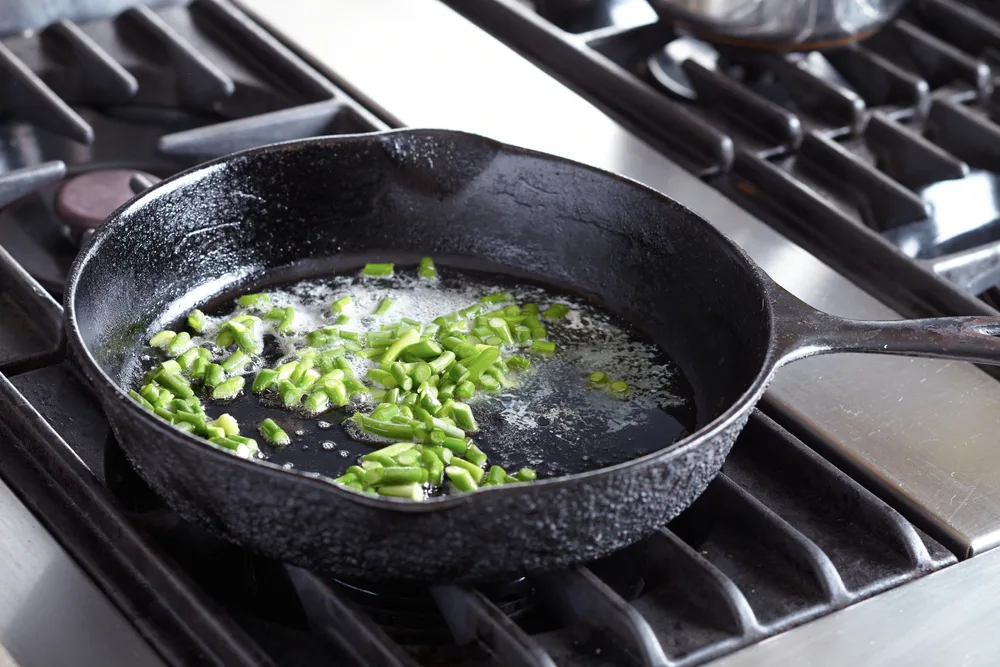
So, you’ve harvested a handful of garlic scapes from the hardneck garlic varieties growing in your garden. But what should you do with them? Here are some ways to use up scapes from your vegetable plot:
1. Make a Simple Salad With Garlic Scapes
There are a wide range of simple salads that you can make using scapes. Take for example this simple recipe:
Potato Salad With Scapes, Snap Peas and Scallions @ finecooking.com
2. Make an Easy Pasta Dish
You can also include scapes in a range of pasta dishes. One example can be found at the link below.
Scape and Cherry Tomato Pasta @ saveur.com
3. Make Garlic Scape Pesto
You can also blend your scapes to make a delicious pesto. This too is great in salads, on pasta, or in a wide range of other recipes.
Scape Pesto @ vanillaandbean.com
4. Stir Scapes into Risotto
Scapes can also work very well in a range of different risotto recipes. Risotto is a great dish for using up a range of seasonal vegetables.
Scape Risotto @ tablespoon.com
5. Blanch Scapes and Add To Mashed Potato
Scapes also add a little something to mashed potato. This simple side dish could work well with a range of meals.
Scape Mashed Potatoes @ melissas.com
6. Make a Garlic Scape Omelette, Quiche or Tart
Scapes work well with eggs in an omelette or quiche, and also in tarts with other home-grown produce. One example is given below.
Scape quiche @ makegrowcook.com
7. Use Garlic Scapes in Soup
Scapes can also work well in a wide range of soups. This potato soup is one particularly delicious example.
Potato Scape Soup @ itsavegworldafterall.com
8. Grill Garlic Scapes (Like Asparagus)
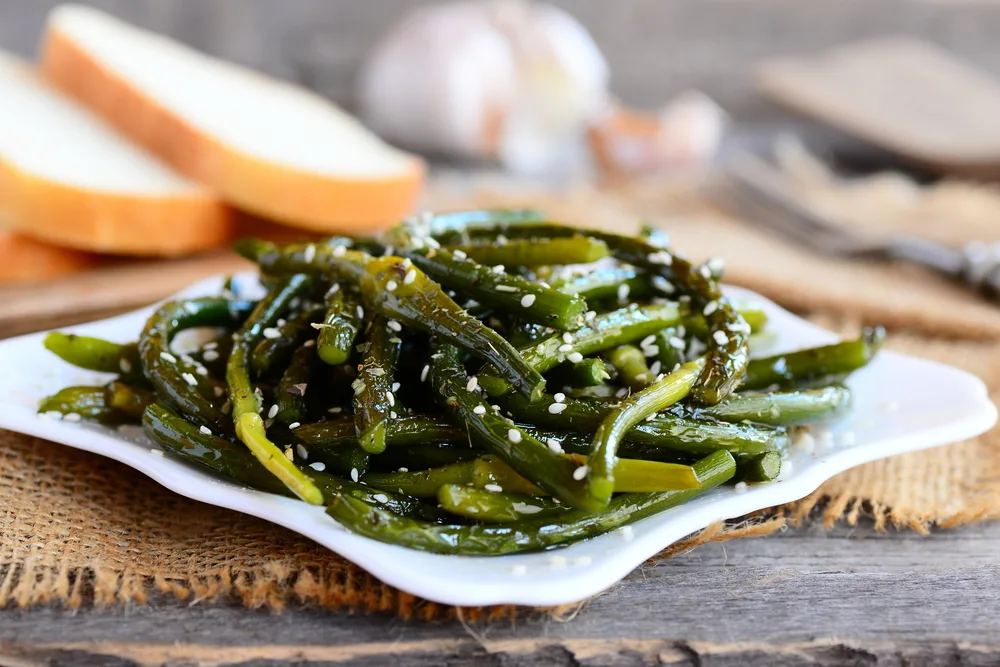
Grilling scapes brings out their flavour. They can be popped on a barbecue or grill in much the same way as asparagus.
Grilled Scapes @ withfoodandlove.com
9. Stir Fry Scapes
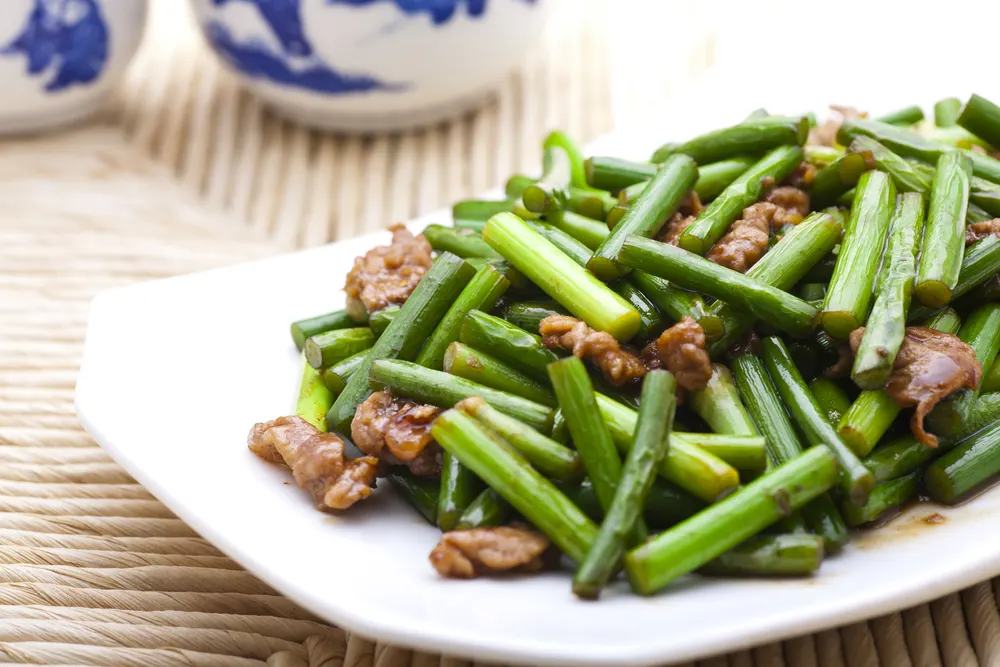
Another delicious way to cook scapes is to stir fry them, as in this recipe, below.
Stir Fried Scapes @ koreanbapsang.com
10. Make Tempura Fried Scapes With a Sweet Chilli Sauce
For a treat, deep fry scapes in a tempura batter and serve them with a sweet chilli dipping sauce as suggested on the link below.
Garlic Scapes: How to Use Them @ Thegarlicfarm.co.uk
11. Make a Scape Dip/ Dressing
Blend scapes with other simple ingredients to make a versatile dip or dressing.
Creamy Garlic Scape Dip @ pinchofyum.com
12. Make Scape Aioli
Scapes can also be used to make an aioli.
Garlic Scape Aioli @ thorpesorganicfamilyfarm.com
13. Make Scape Sandwich Spread
Or you could make a scape sandwich spread to liven up lunchtime.
Garlic Scape Sandwich Spread @ alisonsallspice.com
14. Make Scape Hummus
You can also add scapes to hummus using a range of recipes, like this one:
Garlic Scape Hummus @ thespruceeats.com
15. Make Scape Chutney
Finally, how about making a flavoursome garlic scape chutney?
Grilled Naan With Indian Scape Chutney @ feastingathome.com
Bonus Recipe: Pickled Garlic Scapes
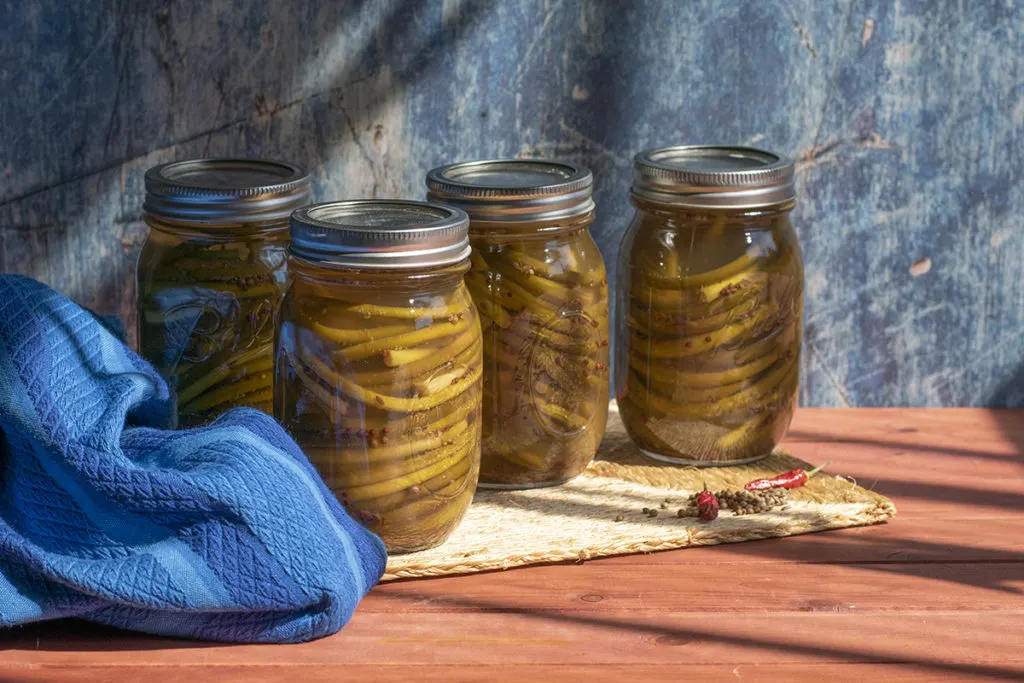
This is one of the easiest – and most delicious – pickles recipes you can make. Tracey, Rural Sprout Editor, runs you through it…
Pickled Garlic Scapes @ RuralSprout.com
These are just some of the many scape recipes you could try.

Get the famous Rural Sprout newsletter delivered to your inbox.
Including Sunday musings from our editor, Tracey, as well as “What’s Up Wednesday” our roundup of what’s in season and new article updates and alerts.

